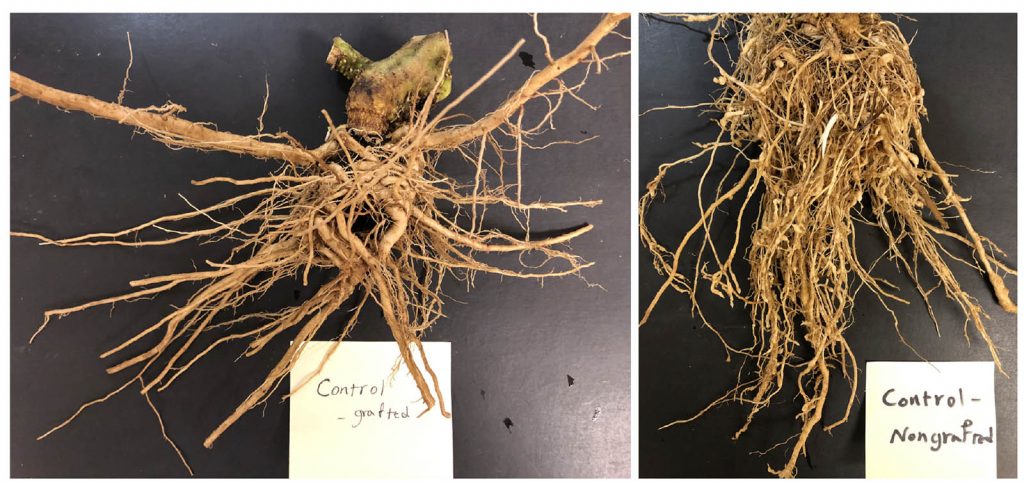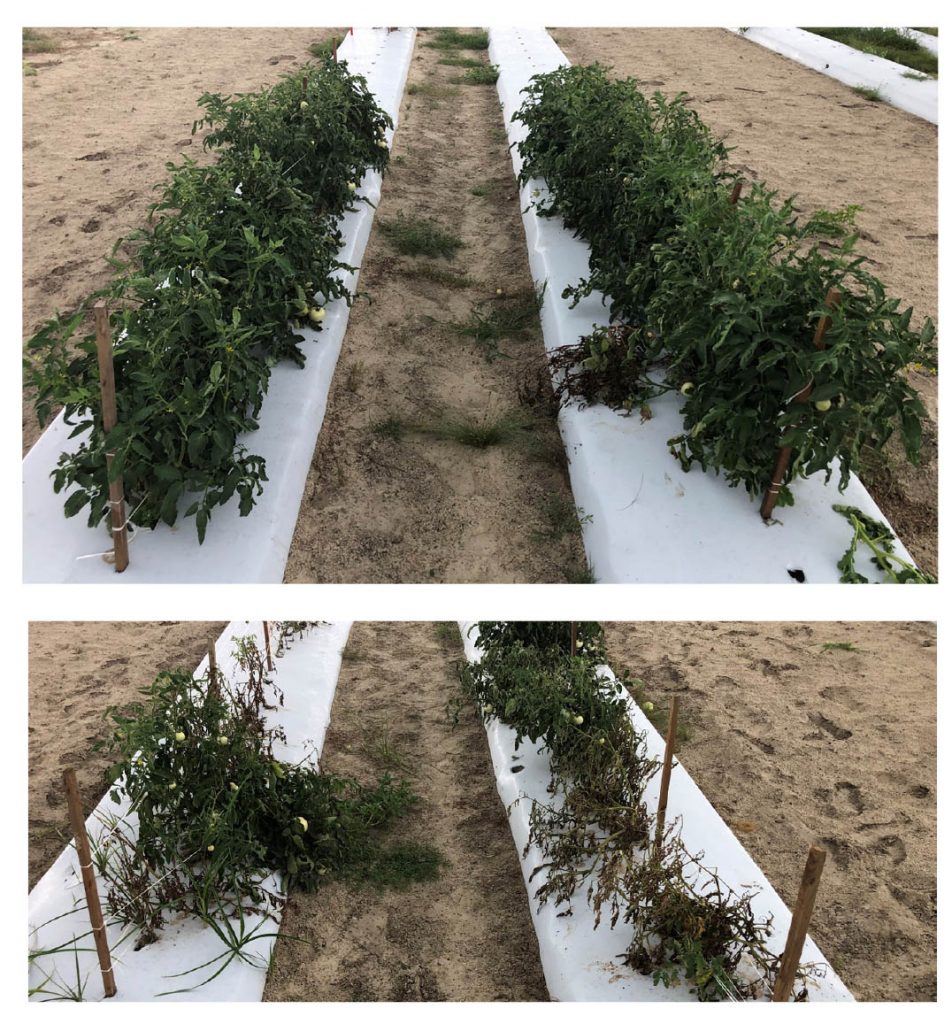
By Abolfazl Hajihassani
Tomato is the most economically important vegetable crop in the United States and has a history of heavy dependence on pesticides.
PATHOGEN PAIR
Root-knot nematodes and southern blight disease are among the most damaging pathogens of tomato. Pre-plant soil fumigation is often, but not always, effective at minimizing yield losses due to soilborne nematode and fungal pathogens. The fumigant 1,3-dichloropropene is only effective against nematodes and is not effective against soilborne fungal diseases. In contrast, the nematicidal efficacy of the fumigant chloropicrin is not the primary reason for its application against nematodes, as it mainly has fungicidal activity.
Fumigants for control of these pathogens are diminishing due to environmental concerns and increasing regulations and restrictions on the use of these chemical treatments. Therefore, alternative control strategies have been extensively investigated over the past decade. Grafting tomato onto rootstocks with resistance to multiple root-knot nematode species combined with application of non-fumigant nematicides could offer effective management strategies that would provide growers with additional tools for managing root-knot nematodes. Moreover, using resistant rootstocks is one of the most effective methods to manage southern blight disease.
Using a three-year award funded in 2019 by the U.S. Department of Agriculture National Institute of Food and Agriculture Methyl Bromide Transitions program, the University of Georgia (UGA) is investigating the effectiveness of a rootstock (Solanum sisymbriifolium) in managing root-knot nematodes and southern blight disease of tomato. Replicated field trials under experimental and commercial production conditions in Georgia are underway.
Root-knot nematodes (Meloidogyne spp.) are tiny parasites that feed inside roots, induce galls (which contain nematode eggs) and disturb water and nutrient uptake from the soil into the plant, thus reducing crop yields. Root-knot nematodes cause approximately $15 million in damage annually to U.S. tomato production.
In Georgia, five species of root-knot nematode are among the most important problems in tomato production. Tomato varieties with resistance to the most common species of root-knot nematodes (M. incognita, M. arenaria and M. javanica) have been released in the past, but these cultivars often lack resistance to other nematode species like M. enterolobii and M. haplanaria and to southern blight disease. Heirloom cultivars are particularly sensitive.
Southern blight, caused by the fungus Athelia rolfsii, is a necrotrophic pathogen commonly found in many areas of the southeastern United States. Tomato plants infected with A. rolfsii wilt permanently in soil with a high level of pathogen inoculum, resulting in significant economic losses to growers.

ROOTSTOCK TO THE RESCUE
Grafting onto rootstocks resistant to southern blight can reduce the disease incidence and increase yield. Currently, the Maxifort rootstock, which carries resistance to southern blight, is commercially available. It also contains the Mi-1 gene that confers moderate resistance to species of M. incognita, M. arenaria and M. javanica.
In UGA greenhouse studies, S. sisymbriifolium was challenged with M. incognita, M. arenaria, M. haplanaria and M. enterolobii. Results showed that it confers a high level of resistance to all four root-knot species. These results were also confirmed in microplot and field experiments using M. incognita species. The data suggest the importance of using S. sisymbriifolium as a resistant rootstock for effective management of these devastating nematodes in infested tomato fields.
However, since grafted tomatoes are more expensive than non-grafted ones, growers will probably want to use rootstocks with resistance to multiple pathogens to minimize the production costs associated with application of multiple pesticides. Using a field study conducted in the summer of 2020, S. sisymbriifolium rootstock was found to be resistant to A. rolfsii. Field plots grown with tomato grafted on therootstock had significantly fewer dead plants compared to plots transplanted with non-grafted tomatoes.
The next step in the research studies will be to evaluate the combined use of grafting and nematicides and/or fungicides to manage effectively both root-knot nematode and southern blight in tomato. Efforts will also include a cost-return analysis of the control practices developed in this project to compare with growers’ practices for disease management.









